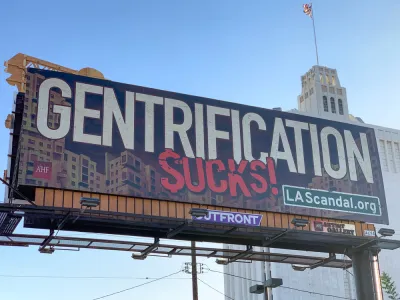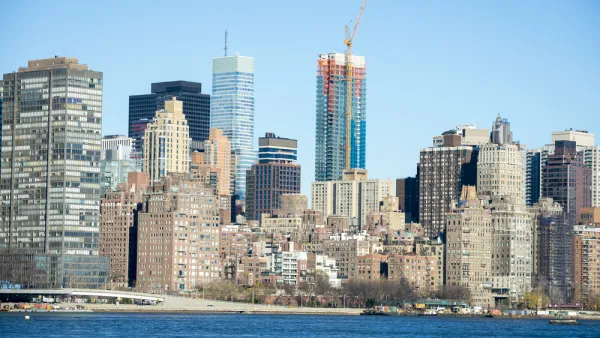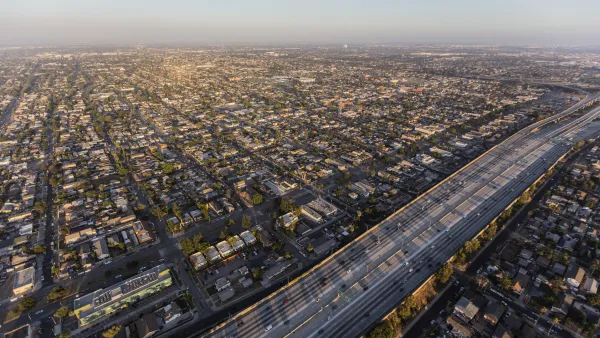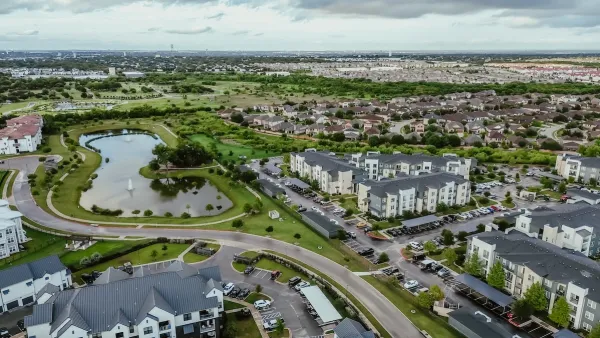Most likely, no one in particular—but policy changes can alleviate the housing shortage and prevent displacement.

As more neighborhoods and cities experience the impact of redevelopment, often termed gentrification, people seek individual culprits to pin the blame on. Whether it is the owners of the hip new coffeeshop, the developer building that new building, or the young professionals renting or buying homes in previously undesirable neighborhoods, the human need for attribution leads us to discount broader, institutional forces, according to Alan Ehrenhalt’s recent piece in Governing.
While “yuppies” or “hipsters,” whatever the term du jour is, are an easy target—“Most seriously, they raise rents and property taxes and inevitably force some poorer inhabitants to look elsewhere for lodging”—Ehrenhalt argues that “To hold them responsible for the discomforts of gentrification is essentially to blame the customer.”
Gentrification’s suppliers, Ehrenhalt writes, are indeed real estate companies and developers. “Yet for developers and landlords to be the true villains of gentrification, it would be necessary to determine that they are worse stewards than the small property owners who dominated poor neighborhoods in pre-gentrification days. There is no real evidence that this is the case.”
The real problem, according to Ehrenhalt, is the shortage of affordable housing supply and construction. “It’s the fault of an entrenched and complex system that has existed for decades and doesn’t have a perpetrator to put the finger on.”
To Ehrenhalt, “The only way to make a serious dent in the shortage of moderately priced housing is to encourage more of it without demonizing the people living comfortably under the current rules.”
While eliminating single-family zoning and permitting light density increases is one avenue for creating more housing, these policies probably won’t make a significant dent in the million of housing units needed to alleviate the current shortage. Ehrenhalt concludes, “To me, the only practical zoning solution is to stick to commercial corridors, and to build big there — tall apartment buildings, not duplexes or fourplexes” near transit lines that can accommodate families.
FULL STORY: Gentrification and the Search for Villains

Analysis: Cybertruck Fatality Rate Far Exceeds That of Ford Pinto
The Tesla Cybertruck was recalled seven times last year.

National Parks Layoffs Will Cause Communities to Lose Billions
Thousands of essential park workers were laid off this week, just before the busy spring break season.

Retro-silient?: America’s First “Eco-burb,” The Woodlands Turns 50
A master-planned community north of Houston offers lessons on green infrastructure and resilient design, but falls short of its founder’s lofty affordability and walkability goals.

Test News Post 1
This is a summary

Analysis: Cybertruck Fatality Rate Far Exceeds That of Ford Pinto
The Tesla Cybertruck was recalled seven times last year.

Test News Headline 46
Test for the image on the front page.
Urban Design for Planners 1: Software Tools
This six-course series explores essential urban design concepts using open source software and equips planners with the tools they need to participate fully in the urban design process.
Planning for Universal Design
Learn the tools for implementing Universal Design in planning regulations.
EMC Planning Group, Inc.
Planetizen
Planetizen
Mpact (formerly Rail~Volution)
Great Falls Development Authority, Inc.
HUDs Office of Policy Development and Research
NYU Wagner Graduate School of Public Service




























